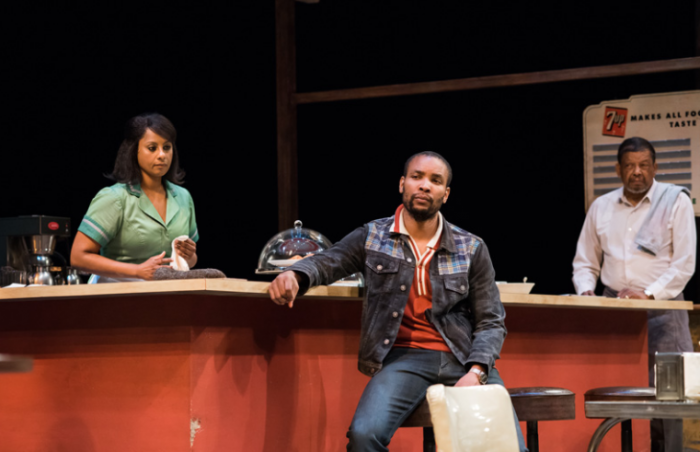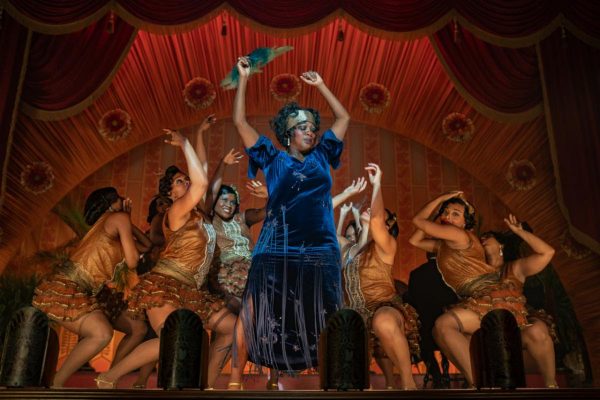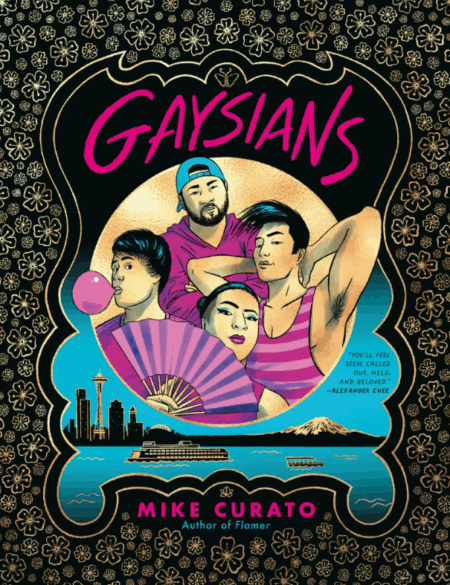
Nicole Lewis (Risa), Carlton Byrd (Sterling), Eugene Lee (Memphis) in Seattle Repertory Theatre’s production of August Wilson’s Two Trains Running. Photo by Nate Watters.
Review: Two Trains Running by August Wilson. Produced by Seattle Repertory Theatre and Arena Stage. Directed by Juliette Carrillo. Scenic Design by Misha Kachman. Costume Design by Ivania Stack. Lighting Design by Sherrice Mojgani. Sound Design and Original Music by David R. Molina. With Reginald André Jackson, Eugene Lee, Nicole Lewis, David Emerson Toney, Frank Riley III, Carlton Byrd, and William Hall Jr. Now through February 11. 2018 at Seattle Repertory Theatre.
If August Wilson isn’t one of the first names on your personal “Top American Playwrights” list, then I don’t know what the hell is wrong with you. Wilson, a Pittsburgh native made Seattle his final home before his untimely death from liver cancer at age 60 in 2005. Best known for his 10 play, “Pittsburgh/Century Cycle” which examines African American lives over the course of the 20th century with 9 of the plays centered on his hometown neighborhood of the Hill District, the traditional African American community in Pittsburgh, August Wilson’s work will endure based on the strength of his story telling and the richness and depth of the characters he created.
So many of his works have entered the pantheon of great American plays: “Ma Rainey’s Black Bottom”, “Fences”, “The Piano Lesson”, “Joe Turner’s Come and Gone” and TWO TRAINS RUNNING, now onstage at Seattle Repertory Theatre in a co-production with Washington D.C.’s Arena Stage.
We’re not gonna futz around: this new production of Two Trains Running is a vividly directed, designed and acted tour de force for everyone involved…gorgeous, lush theater making that emphasizes the beauty, pain, power and complexity of August Wilson’s characters and story. Juliette Carrillo has done a beautiful job of staging, with an emphasis on creating subtle but powerful moments for each character and an astonishing attention to detail that includes cleverly choreographed tiny vignettes during transitions between the play’s various scenes that include actors engaging in minute character studies that combine mood with movement and sound and music. This is impeccably directed theater.
Two Trains Running is Wilson’s 60s set entry for his Century Cycle, though it barely qualifies as the play is set in the waning days of the decade, 1969 which also parallels the condition of the Hill District. Urban renewal is ravaging the neighborhood with dozens of buildings and small businesses torn down to make way for a new civic center and low income housing. The cantankerous cafe owner Memphis is holding onto his business as long as he can in an effort to get the best price ($25,000 or nothing!) from the city. His business rival/frenemy the skinflint undertaker/property owner West is trying to convince Memphis to sell to him, but the stubborn Memphis, a refugee from Mississippi racism, refuses to give in.
Over the course of the 2 act/3 hour play, a handful of regulars enter and exit Memphis’s cafe intertwining the various threads of the play that is more about mood and character rather than a solid through line of plot. Numbers runner Wolf is modestly interested in the introverted waitress/cook Risa, who has a mysterious backstory she’s not keen to share…at some point in her life, she has slashed her legs with a razor and has hideous visible scars as a reminder. A newcomer to the cafe is also interested in Risa…Sterling is a young man just released from prison after a foolish attempt at bank robbery, but his positive attitude on life and hope for the future seems to interest Risa who starts to emerge a bit from her shell.
Sterling is given advice from cafe regular Holloway, a middle aged man who urges Sterling to seek guidance from the never seen Aunt Ester, a “washer of souls” a rumored 322 year old sage, who is a recurring character in Wilson’s Pittsburgh Cycle.
There’s also Hambone, the mentally challenged man who is obsessed with the fact he feels cheated out of payment for work he had done for the local butcher years before…he claims he was promised a ham for the work, but the butcher reneged and now Hambone (who earned his name based on his obsession) wanders the neighborhood braying for his “Ham”.
All these characters intertwine in a beautiful and thoughtfully woven tapestry by Wilson and under the staging by Ms Carrillo. The play is long but it never FEELS long…in fact, you long for MORE time with these characters.
The acting ensemble is tight and on point with exceptional work from all seven actors. Two of the 7 are locally based and familiar to Seattle audiences…Reginald André Jackson gives a very funny and charming performance as the likable but shady Wolf (while wearing costume designer Ivania Stack’s terrific period vividly bright shirts, tight pants and sexy leather jackets) and William Hall Jr is great as the conniving old undertaker West who’d like to get his hands on the cafe.
There’s also strong work from Frank Riley III as the “manchild” Hambone, nicely playing a role that is rich with feeling but without much verbosity. Nicole Lewis has the tough role of Risa, the enigmatic mystery woman who doesn’t reveal much, but Ms Lewis does a fine job of revealing those small details when they do occur. She is also well matched with the youthful fire and optimism of Carlton Byrd’s Sterling, who gives a richly vibrant and passionate performance as the hopeful suitor.
I most admired the very strong work of two veteran actors. David Emerson Toney’s complex portrayal of the plainspoken, easy going Holloway is so beautifully nuanced. It’s the kind of performance that sneaks up on you, with the subtlety of the work eventually revealing the richness inherent in the character. He’s matched by the power and bravado of Eugene Lee’s work as Memphis, the touchy owner of the cafe who gives an operatic performance here as a man haunted by his past and puzzled by his present and future. It’s grand work from two fine actors who each get tautly written monologues that establishes both their characters and the themes that Wilson explores in the cycle of plays.
All that beautiful acting is matched by some truly handsome designs including Misha Kachman’s evocative set that includes the haunting backdrop of ravaged 1969 Pittsburgh and the criss crossing of the overhead power lines. Sherrice Mojgani’s subtle lighting design is an integral part of the overall look and feel of this production. And, David R. Molina’s sound and music composition here are actually an 8th character in this play…the sounds/music add so much depth to the material and mood being established.
I have nothing bad to say about Seattle Rep/Arena’s beautifully realized production of August Wilson’s “Two Trains Running”. It’s a mesmerizing night of theatrical storytelling with superb work from all involved and the best thing at the Rep in quite a long time. Highly recommended for anyone who appreciates rich, moody drama and compelling/fascinating characters.
















